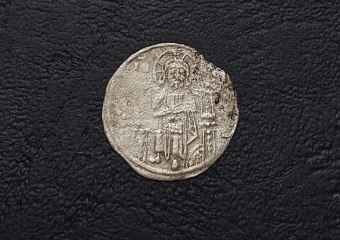Exhibition "Luster of Eternity – a two wheeled chariot from the village of Karanovo, Nova Zagora region"
The Chariot and the Road to Eternity - The rituals accompanying burials of prominent Thracian noblemen
[img right]uploads/old/images/banners/banner1.jpg[/img][justify]The research of the “Dulgata Mogila” Tumulus near the village of Karanovo, Nova Zagora Region is one of the very few cases where we can trace the entire pattern of ritual practices accompanying burials of prominent Thracian noblemen.
Thracians believed in a better afterlife, that is why the deceased were to be laid with all the objects they needed during their lifetime. The grave goods depended on the social status of the deceased person and the means the family could afford to spend on it. The wealth of the Thracian family, whose members were buried in Dulgata Mogila Tumulus, is apparent from the sumptuous burial and the abundance of rich and original grave goods.
In 1976 during rescue works, the archaeologist Mityo Kanchev found three brick-vaulted tombs in the Dulgata Mogila Tumulus. The burials were conducted by cremation at a pyre, outside the grave structures. The remains of the funeral pyre were gathered and laid on the floor of the grave. Part of the rite is revealed by the charred nutshells and burnt animal bones. After that ail the objects which had been used or were favourite of the deceased, were arranged there. A Thracian nobleman- a warrior or a hunter would mainly need weapons - swords, daggers, spears and a shield. He was an educated man and kept up a correspondence - it is proved by the expensive luxury in k-pots discovered in the graves. A part of the grave goods were also the toiletries, a strigil-holder with strigils and an oil-flask, bath bronze vessels. Placing a candelabrum with an oil lamp which was believed to chase away the darkness was of essential importance. Another requisite was the bronze, earthenware or glass tableware necessary for the sumptuous feasts. Pitchers full of wine were not to be omitted too. In the graves there was a set of surgical instruments made by an exceptional master with incredible silver; gold and niello inlay.[/justify][shrink]
The carts - one four-wheeled and one two-wheeled chariot were placed near the tumulus. The two-wheeled chariot is characterized by an extremely interesting design and exquisite decoration. The saddle-horses were laid near the carts. The funeral feasts, offerings and libations marked the beginning of piling the burial mound.
From the studied carts - the two-wheeled chariot is of special interest - It is a subject of the reconstruction represented in the exhibition "Luster of Eternity – a two wheeled chariot from the village of Karanovo, Nova Zagora region" guest in the Archaeological exposition of RIM Burgas.
The chariot from Karanovo is closest to the Roman cisium - a two wheeled car famous with its high speed and luxurious design.
The design of the two-wheeled chariot and its analogues in depictions from the Roman Period are closest to the cisium type. This was a light; open two-wheeled chariot intended for one or two persons and was the most rapid one among the ancient passenger vehicles. Cisium was mentioned for the first time by Roman writers in the 1st century BC and according to later Roman dictionaries and commentaries this type of two-wheeled chariot originated from Gallia
Long before coming into contact with the Romans the Thracians used their carts for farming, travelling, and racing or in wartime. Thus, the design of these different types of carts depended on their designation. Admittedly, all the technical innovations had been gradually applied in the making of carts. In Iliad Homer described Rhesos' shining chariot which was fashioned from gold and silver with huge white horses put in harness. The spread of carts in Thrace is evident from the coins of the Thracian tribe Deroni, from depictions on metal vessels (a silver phiale from Bashova Mogila; a gold jug from Grave No 3 of Mogilanskata Mogila; a silver jug from Rogozen Treasure, the mural paintings in Kazanluk Tomb and the relief from Sapla-Dere.
The cars the Thradans used to lay in graves, were usually the favourite ones of the buried aristocrat - one, with which he can travel comfortably in the afterlife.
The carts laid in graves at funerals were not battle, racing and procession ones or ones for carrying loads. These were chariots that could only be used for a comfortable travelling or ride. Like the rest of the grave goods, the cart was laid there so that the deceased could use it in afterlife and thus it demonstrated the importance of that person.
The two-wheeled chariot from Karanovo was open in front which is proved by the basket found in situ during the archaeological investigations. The decoration of the cart was mainly on the rear part and along the sideboards of the basket. The cart was a luxury passenger chariot with leather-strap suspension, and its design and artistic appliqué’s make it an extraordinary ingenious vehicle.


Comments
comments powered by Disqus